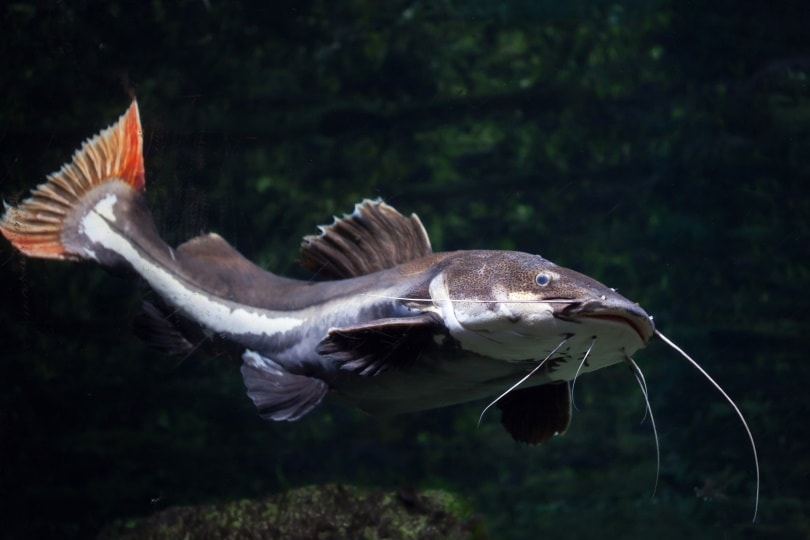
Whether you are looking to fry up some catfish after a day on the lake or raise your own catfish farm at home, you need to know what catfish eat. In the wild, catfish are omnivores, though catfish are known to be scavengers and herbivores if their environment requires it.
The variety in catfish diet largely depends on the type of catfish you are talking about. Their diet is primarily dependent on their habitat. With nearly 3,000 types of catfish around the globe, it shouldn’t be shocking that certain catfish eat different types of food.
In this article, we are going to focus on the most common types of food that catfish eat. As we already mentioned, most catfish are omnivores, meaning they eat both plants and meat. Let’s take a closer look now.

Catfish in the Wild
No matter where you travel in the world, you’re likely to stumble upon a catfish—if you look hard enough. You’re most likely to find them in freshwater lakes and rivers, though you can also find them in oceans. Although you may find certain breeds of catfish at the aquarium, these fish aren’t popular pets. Instead, they make good eating.
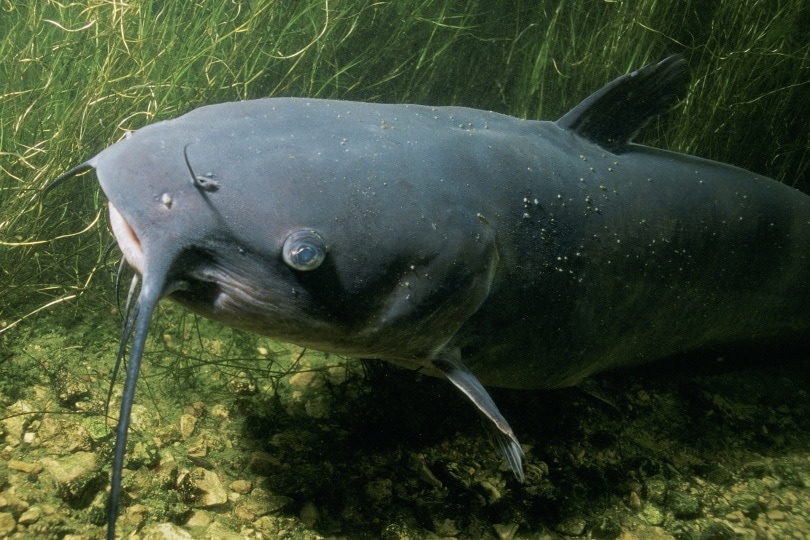

Where Do Catfish Live in the Wild?
Catfish are found all over the globe. Catfish are typically freshwater dwellers that like to hide in deep pools around different items for further security, such as logs and rocks. You will likely find most catfish at the bottom of rivers or lakes, though you can find some catfish in the ocean and in other areas.
What Do Catfish Eat in the Wild?
In the wild, catfish are considered opportunistic feeders. This simply means that they will eat just about anything they can get their mouths on. Unlike many other fish and animals, they aren’t very picky. They often prefer meats, but they are omnivores that will eat both plants and meat.
Some of the most common diets for catfish include algae, insects, smaller fish species, crayfish, snails, worms, small mammals, and fish eggs. The daily diet for catfish changes regularly since they are scavengers that eat what they find.
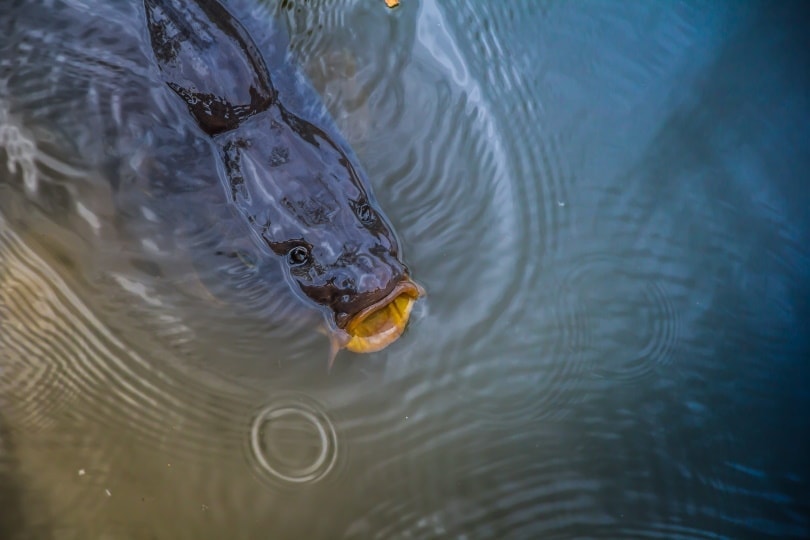

What Are the Feeding Habits of Wild Catfish?
Because catfish are so opportunistic, they feed both during the day and night, and you can find them at the bottom or surface of the water. The only catfish that is strictly nocturnal is the African Catfish, which is shocking to most anglers.
The exact feeding habit of catfish will depend on the time of year, their age, and species. It’s best to research catfish feeding habits based on the time of year and catfish in your area. For example, Blue Catfish primarily eat diets of fish, crustaceans, mollusks, and insects, whereas White Catfish eat more worms and insects.
How Do Wild Catfish Hunt?
Even though the exact feeding habits for catfish may vary, how they hunt does not. As you probably know, catfish are known for their barbels. These barbels, which almost look like whiskers, are what the catfish use to hunt. They act as sensors for smell and taste.
Whenever food comes near, the catfish will be able to detect the smell using these barbels. So, they will go on the hunt for whatever food they are smelling.


Raising and Catching Catfish
Catfish are one of the more popular fish to catch, especially in areas where catfish are prominent. They can also be raised in farms for sources of food. The main difference between feeding these catfish and wild ones is that you are the one who provides food for them.
Obviously, you will need to use a bait to catch catfish whenever you are fishing. As you raise catfish, you will also have to provide them a constant food source that replicates their diet in the wild.
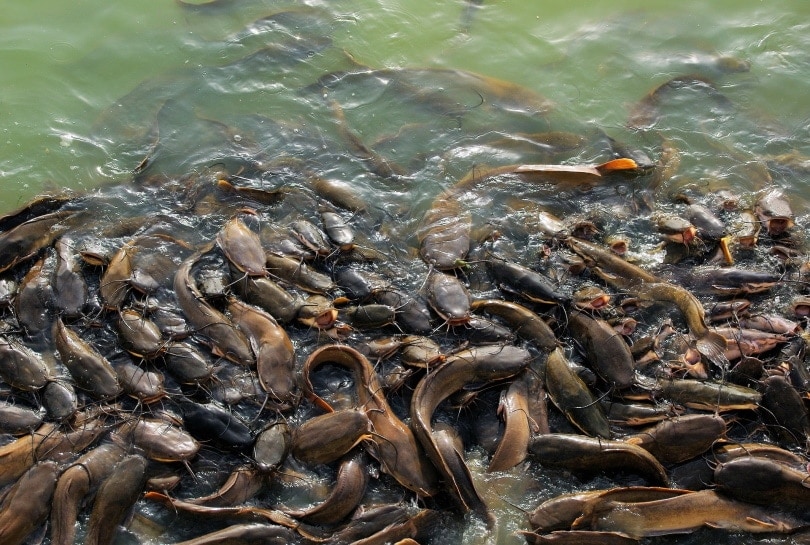

Do Wild Caught and Farm-Raised Catfish Eat the Same Food?
Generally speaking, wild-caught and farm-raised catfish eat the same food. Because of their opportunistic nature, wild-caught catfish will adapt to the food source provided at the farm. Meanwhile, catfish that have been raised in captivity already know how to eat the food. Either way, both types of catfish will adjust to the pellets, frozen mixture, and any other food source provided.
What Bait is Best for Catfish?
Bait for catfish depends on the exact type of catfish you are fishing for. For example, fish, shrimp, and chicken liver tend to be great bait for Blue Catfish. As for Channel Catfish, you will likely get more bites when you use soft crab, squid, and hot dogs as bait. You need to research the type of catfish in the area you intend to fish in to find the best bait.
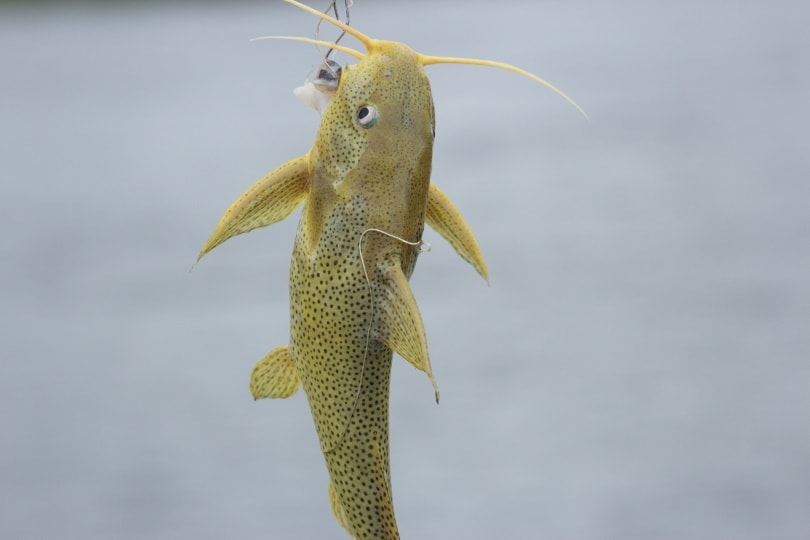

What Do You Feed Farmed Catfish?
Because catfish are so opportunistic, it is pretty easy to feed farmed catfish. Most farmers feed their catfish a variety of pellets and frozen meats. About 30% of farmed catfish’s diets come from pellets. Farmed catfish will also scavenger for plants, insects, and other food sources in their farm habitat.
Looking for aquarium catfish? Check out our articles on the Pictus and Cory Catfish!



Summary
At the end of the day, catfish are not picky eaters. As omnivores and scavengers, they eat insects, meat, and plants. To them, it doesn’t matter what’s on their plate, as long as something is there. Both wild and farmed catfish are pretty easy to feed.
Because there are so many varieties of catfish, selecting the right bait for catfish can be a bit trickier. You need to select the bait based on the type of catfish you are fishing for. You want the bait to replicate the catfish species’ natural food source so that they recognize the bait as food.
- See Also: What Do Pufferfish Eat in the Wild and as Pets? Nutrition Facts & FAQ
Featured Image Credit: Vladimir Wrangel, Shutterstock













